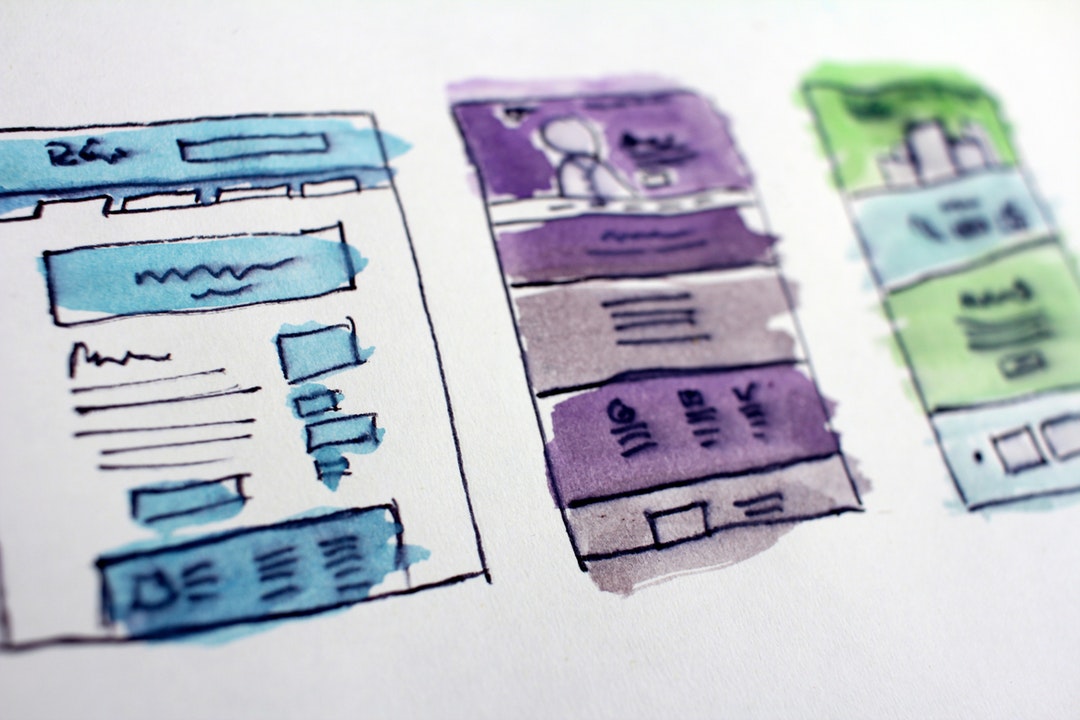
Has this ever happened to you?
You have a prospective client who was referred to you by another client, a friend, or a family member.
But then they don’t call for an appointment. They don’t email you. You never hear from them again.
What happened? It’s likely that the client did what most people do before reaching out to a business–they visited your website to learn more about who you are and what services you provide.
Websites for businesses can help boost your credibility and get your name out there–but poor web design could damage your reputation instead.
Just 1/20th of a second after a visitor clicks on your website, they’ve already formed a first impression of your company. Your website is a reflection of how you manage your business–so online appearance is everything.
Let’s take a look at some of the potential pitfalls that could be hurting your website and your business.
1. It’s Too Cluttered
Try to see your website from the perspective of a visitor. What does it look like at first glance? Keeping your website professional means keeping things concise. Poorly designed websites are often cluttered with text and photos.
Explain quickly what your business is about and what you can do for your customers. Remember the golden rule of white space.
Customers are looking for order and simplicity. When your website is cluttered, it sends a message that your business is less credible. Too much content will increase the likelihood that a user will just exit the tab.
2. It Has Too Much Fluff
Conciseness is key. Take another look at the text on your webpage and see where you can cut down.
Eliminate fluff and weak language. Don’t just say things like “We’re the best” or “We’re the most innovative.” It tells the user nothing and doesn’t explain what makes your company different.
Get straight to the point and use strong, compelling language. Remember, your customer wants to know one thing: “What can you do for me?”
3. It’s Not Optimized For Mobile
Good content isn’t all your website needs–the navigation needs to be mobile friendly. These days, customers are more likely to come to you on their phones than on their computers.
When your site isn’t optimized for mobile, it will be hard for clients to view your site on their phones. Your formatting could be distorted or it might be hard for clients to navigate from page to page.
In addition, a mobile-optimised site can help boost your search engine ranking. Mobile-friendly sites get priority in the search listings over those that aren’t.
4. It’s Unclear
Once again, site navigation can be one of the biggest hurdles to getting clients or customers. No one wants to have to figure out how to use your website when they get there.
Have a clear and user-friendly design that’s concise and easy to follow.
It should be simple to find different pages on your site and navigate to them. Make sure that all your pages are within 2-3 clicks from the home page.
5. It’s Cheesy
Above all, a website needs to look professional.
While graphics and images can add a lot to your website, avoid using cheesy stock photos–or photos that are pixelated or blurry. These will immediately make you look amateurish and damage your credibility.
When possible, use your own custom images. You can also use stock imagery if it’s custom made and high-quality, but be prepared to put in some work to find good content.
6. It’s Not Credible
Even if you’re the best at what you do, if your website doesn’t seem credible, customers are less likely to take you seriously.
Use other credibility elements – customer testimonials or well-known accreditations. If your business has been operating for a long time, put down the number of years.
Just saying “we’re the best” isn’t enough. Backing up your statements with the facts can help boost your credibility and conversion rate.
7. It’s Vague
When people go onto your website, they usually have a goal in mind. They want to know more about your business and what you can offer them–and they want to know it fast. Don’t slow down the process by making them work to find what they need to know.
Display your phone number and contact information clearly on every page. Make it clear where you’re located or what areas you provide services to. Most importantly, make sure that any prices or rates are clearly marked.
A customer should be able to open your site and know what they need to know in less than 30 seconds. If they can’t find what they’re looking for, they might just move on to a competitor instead.
8. It Has Weak Content
High quality, useful content is a crucial factor for boosting your conversion rates and for search engine optimization. Creating actionable content can solidify your reputation and help spread the word about your business.
Be sure to have a blog on your website and update it frequently. Keep it filled with useful tips about your industry: how-to articles, lists, and tutorials.
Nothing will kill your content faster than bad formatting or poor grammar. Your content should be clean, compelling, and easy to read.
For SEO purposes, try putting in a few keywords and link to outside sources to help boost your rankings. Just be sure you don’t over-stuff keywords or link to too many sources.
Poor Web Design Can Destroy Websites for Businesses
Poorly designed websites for businesses are the quickest way to scare away a potential client or customer. Getting clients is already hard enough, why make it any harder?
Addressing potential problems with your website’s design can help bring in new customers and solidify your reputation. Looking good and respectable will keep people coming back.
Looking for more advice on how to improve your online presence? Check out our blog for the latest web news and design tips to help your business be more successful online.




No Comments